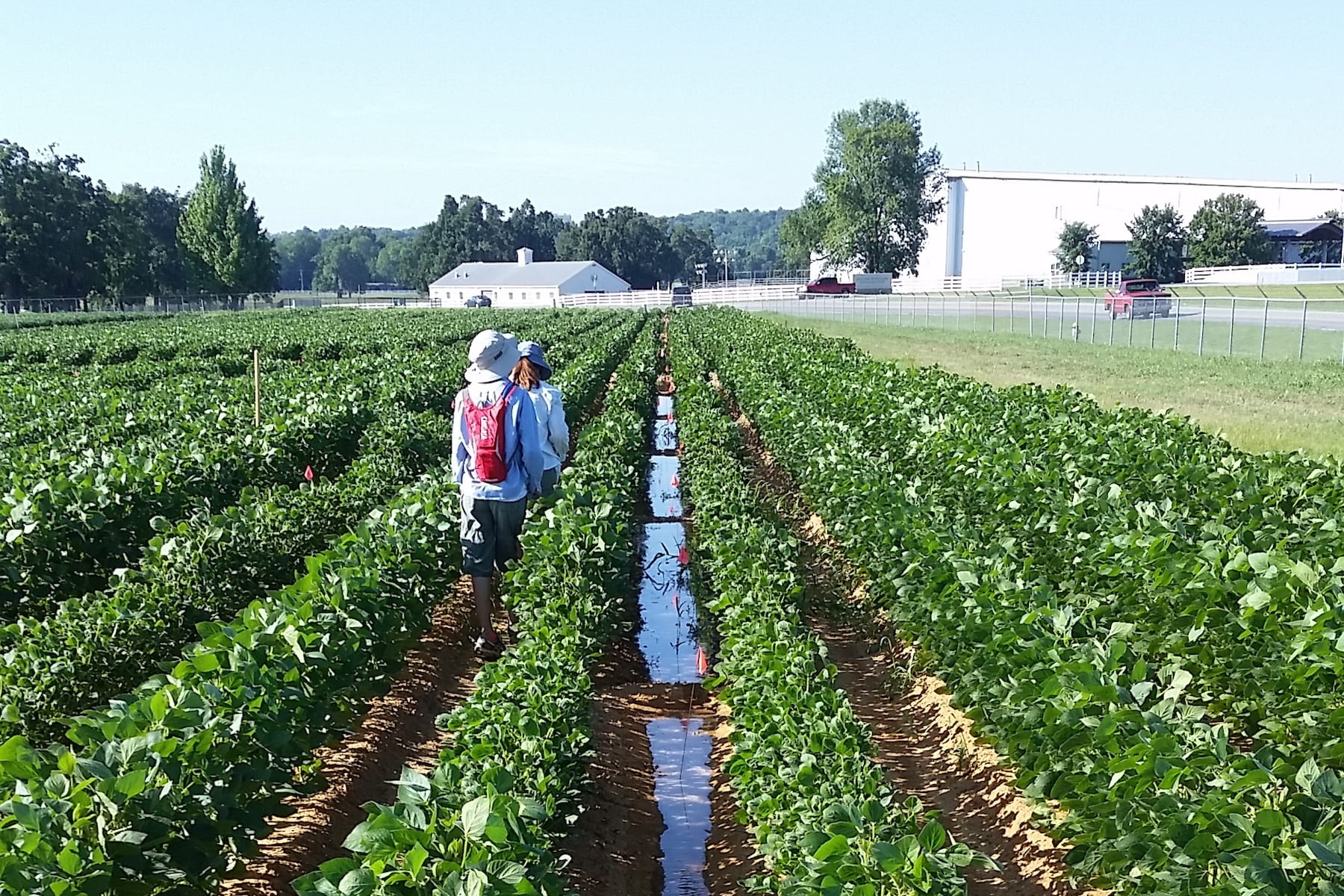Soybean Response to Dicamba in Irrigation Water under Controlled Environmental Conditions

The Problem
While crop damage from drift of auxin herbicides such as dicamba has received a lot of attention, there isn’t much information about what might happen if a susceptible plant absorbs those herbicides from irrigation water. Herbicide residues circulated in tailwater recovery systems may pose a threat of cross-crop impacts to auxin herbicide-sensitive cultivars.
The Research
The research revolved around an auxin-herbicide susceptible soybean cultivar raised in a controlled growth chamber. The plants were exposed to dicamba dissolved in irrigation water applied to the soil surface to simulate furrow irrigation. Five herbicide treatment concentrations, ranging from 0.05 to 5.0 milligrams per liter and encompassing estimated field doses of 3.1 to 310 grams per hectare, were applied to the soil when the soybeans reached an early vegetative stage, when three to four trifoliates were present, or early reproductive stage, indicated by the first bloom.
Researchers measured plant injury from zero percent to 100 percent. The also measured dry mass; height; number of pods and number of pod-bearing nodes. Statistical analyses were performed to determine treatment differences and examine dose effects. Yield losses were projected using 14-day-after-treatment plant injury assessments based on injury-yield relationships described for foliar herbicide exposure, and pod counts.
Dicamba concentration was the main factor affecting all growth metrics. Growth stage was a significant variable only when it came to plant height. Researchers found a nonlinear response to dicamba dose, with the threshold response dose required to affect 50 percent of plants being three times greater for 40 percent crop injury, compared with 20 percent injury.
The Bottom Line
Yield projections indicate that the magnitude of injury and symptomology differ when plants are exposed to dicamba through root uptake rather than by foliar exposure. Drift exposure-based models may be not be able to predict soybean yield loss when injury results from irrigation. Data are needed to develop correlations for predicting yield losses based on field-scale exposure to dicamba in irrigation water, as well as assessment of real-world concentrations of herbicide residues in tailwater recovery systems.
The Researcher

Cammy Willett
Assistant professor
Crop Soils and Environmental Sciences Department
Her work focuses on describing the fate and transport of chemical contaminants through the agroecosystem and determining the impacts on agricultural production systems and the environment. Before coming to the University of Arkansas, Dr. Willett taught Introductory Soil Science at the University of Missouri, where she also received her M.S. and Ph.D. in soil science.

Jung Ae Lee
Assistant professor
Agriculture Statistics Laboratory
Dr. Lee’s statistical expertise is the high dimensional data, with specific topics of batch bias, missing value and outlier. She has extensive research experience in complex experimental design and statistical applications in agricultural and environmental sciences. Dr. Lee received a Ph.D. in statistics from the University of Georgia and finished her post-doc at Washington University School of Medicine in St. Louis before she joined University of Arkansas in 2016.

Jason Norsworthy
Weed scientist for the Division of Agriculture since 2006.
Norsworthy earned his bachelor’s in Plant Science from Louisiana Tech University and his master’s degree and Ph.D. in Agronomy from the University of Arkansas. Before beginning his career at the University of Arkansas, he was an associate professor at Clemson University, and he currently serves as editor for the journal Weed Technology.
Research interests include improving weed management efficiency in Arkansas crops, modeling temporal weed emergence, and population dynamics of weeds in agricultural systems.
»
